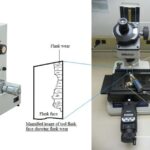IB Biology 23 Views 1 Answers
Sourav PanLv 9November 9, 2024
Which enzymes are involved in the complex system of DNA replication, and what roles do they play?
Which enzymes are involved in the complex system of DNA replication, and what roles do they play?
Please login to save the post
Please login to submit an answer.
Sourav PanLv 9May 15, 2025
DNA replication is a complex process that involves multiple enzymes, each playing specific roles to ensure accurate and efficient synthesis of new DNA strands. Here’s an overview of the key enzymes involved in DNA replication and their functions:
Key Enzymes in DNA Replication
- DNA Helicase
- Function: Unwinds the double helix by breaking the hydrogen bonds between complementary base pairs, creating two single-stranded DNA templates for replication.
- Role in Replication: Initiates the replication process by opening up the DNA at the replication fork.
- Single-Strand Binding Proteins (SSBs)
- Function: Bind to single-stranded DNA after it has been unwound to prevent the strands from re-annealing or forming secondary structures.
- Role in Replication: Stabilizes the unwound DNA and keeps it accessible for replication.
- Topoisomerase
- Function: Relieves the tension and supercoiling that occurs ahead of the replication fork as DNA unwinds. It does this by making temporary cuts in the DNA strands, allowing them to rotate and then resealing them.
- Role in Replication: Prevents tangling and overwinding of DNA, which could impede replication.
- Primase
- Function: Synthesizes short RNA primers complementary to the DNA template strands.
- Role in Replication: Provides a free 3′ hydroxyl group for DNA polymerases to initiate synthesis, as they cannot start a new strand de novo.
- DNA Polymerase
- There are several types of DNA polymerases, each with specific roles:
- DNA Polymerase III:
- Function: The primary enzyme responsible for synthesizing new DNA strands by adding nucleotides to the 3′ end of a primer or growing strand.
- Role in Replication: Extends both the leading strand continuously and synthesizes Okazaki fragments on the lagging strand.
- DNA Polymerase I:
- Function: Removes RNA primers from Okazaki fragments and replaces them with DNA nucleotides.
- Role in Replication: Fills gaps left after primer removal, ensuring a continuous DNA strand.
- DNA Polymerase II:
- Function: Involved in repair processes and proofreading during replication.
- Role in Replication: Provides additional fidelity by correcting errors made during synthesis.
- DNA Polymerase III:
- There are several types of DNA polymerases, each with specific roles:
- DNA Ligase
- Function: Joins together Okazaki fragments on the lagging strand by forming phosphodiester bonds between adjacent nucleotides.
- Role in Replication: Seals gaps between newly synthesized segments of DNA, resulting in a continuous strand.
Summary of Roles
| Enzyme | Function |
|---|---|
| DNA Helicase | Unwinds the double helix at the replication fork. |
| Single-Strand Binding Proteins | Stabilize single-stranded DNA and prevent re-annealing. |
| Topoisomerase | Relieves supercoiling ahead of the replication fork by cutting and resealing DNA strands. |
| Primase | Synthesizes RNA primers to provide starting points for DNA polymerases. |
| DNA Polymerase III | Main enzyme for synthesizing new DNA strands; extends leading and lagging strands. |
| DNA Polymerase I | Replaces RNA primers with DNA nucleotides; fills gaps between Okazaki fragments. |
| DNA Ligase | Joins Okazaki fragments on the lagging strand, sealing nicks in the sugar-phosphate backbone. |
0
0 likes
- Share on Facebook
- Share on Twitter
- Share on LinkedIn
0 found this helpful out of 0 votes
Helpful: 0%
Helpful: 0%
Was this page helpful?




